Considering a trip to Pompeii or Herculaneum, but not sure which ancient city to visit?
As two of the most incredible archaeological sites in Italy, not to mention two cities that are both components of the same UNESCO World Heritage site, Pompeii and Herculaneum are both well worth visiting–but which one is right for you depends on a few factors.
We’ve visited both archaeological sites, and while we enjoyed them both, there are some key differences to be aware of if you need to choose whether to visit Pompeii or Herculaneum.
Here’s how to choose whether to visit Herculaneum or Pompeii, plus our thoughts on whether or not it’s worth visiting both in one day!
Table of Contents
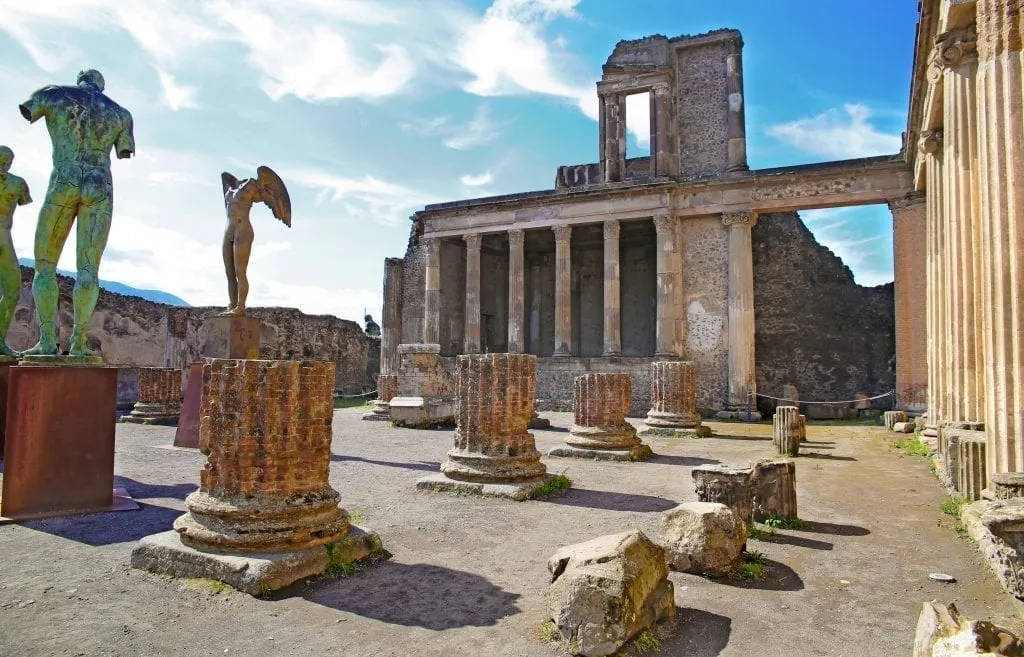
Visit Pompeii if…
… you want to visit the most iconic of the two archaeological sites.
Without a doubt, Pompeii is the more famous of the two cities, known across the world for its tragic fate and incredible preservation.
If you’ve always wanted to see iconic Pompeii, that alone may be reason enough to choose it!
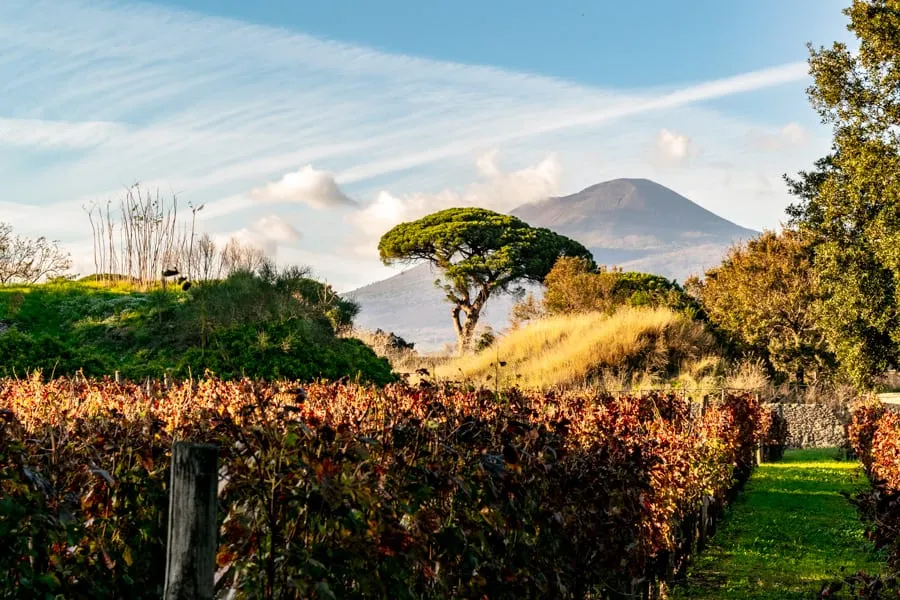
… you want to explore a larger area.
Pompeii is much larger than Herculaneum, and depending on how long you have to explore, that alone might help you settle the Pompeii vs Herculaneum debate.
Not only did ancient Pompeii have more than double Herculaneum’s population before the eruption, but sizable parts of Herculaneum remain unexcavated to this day.

… if you’d prefer to take a guided tour.
While both Pompeii and Herculaneum can benefit from having a guide to help add context to your visit, that’s especially true in Pompeii, where the site is much larger and it’s incredibly easy to miss important details, or to simply get overwhelmed.
If you’re planning to travel there independently, we recommend this popular tour for visits to Pompeii.
If you’d also like to have transportation arranged for you, this day trip from Naples is a great option, and this day trip from Rome is arguably the best way to visit Pompeii from the Eternal City.

… you’re curious about the plaster casts of Pompeii.
In the 19th century, Giuseppe Fiorelli found a curious way to memorialize the human victims of the 79 AD eruption.
By injecting plaster into the ash where bodies had been buried and subsequently decomposed, he was able to create molds that showed people’s physical positions at the time of their deaths.
The plaster casts have been famous ever since, and are a heartbreaking reminder of the human cost of the tragic eruption.
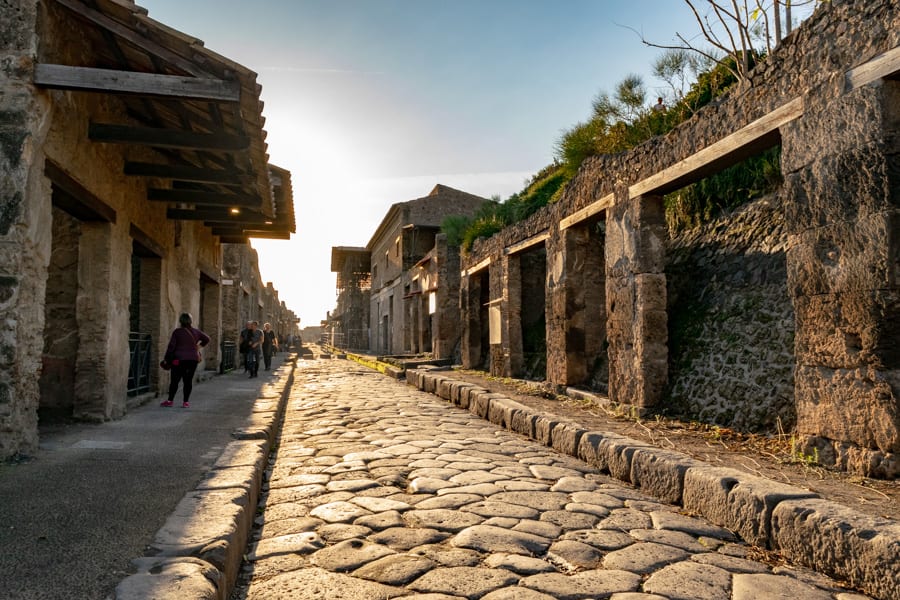
Visit Herculaneum if…
… you want to visit the better-preserved of the two cities.
Better-preserved is a bit up for debate, but Herculaneum is certainly differently preserved from Pompeii!
It was buried in mud rather than ash, and because of that, details like clothing, wooden items, and even some food were preserved in roughly 50 feet of tufa rock.
In practical terms, that preservation combined with the fact that Herculaneum is smaller and denser than Pompeii means that for some visitors, it’s easier to “feel” the reality of the ancient city in Herculaneum vs Pompeii.
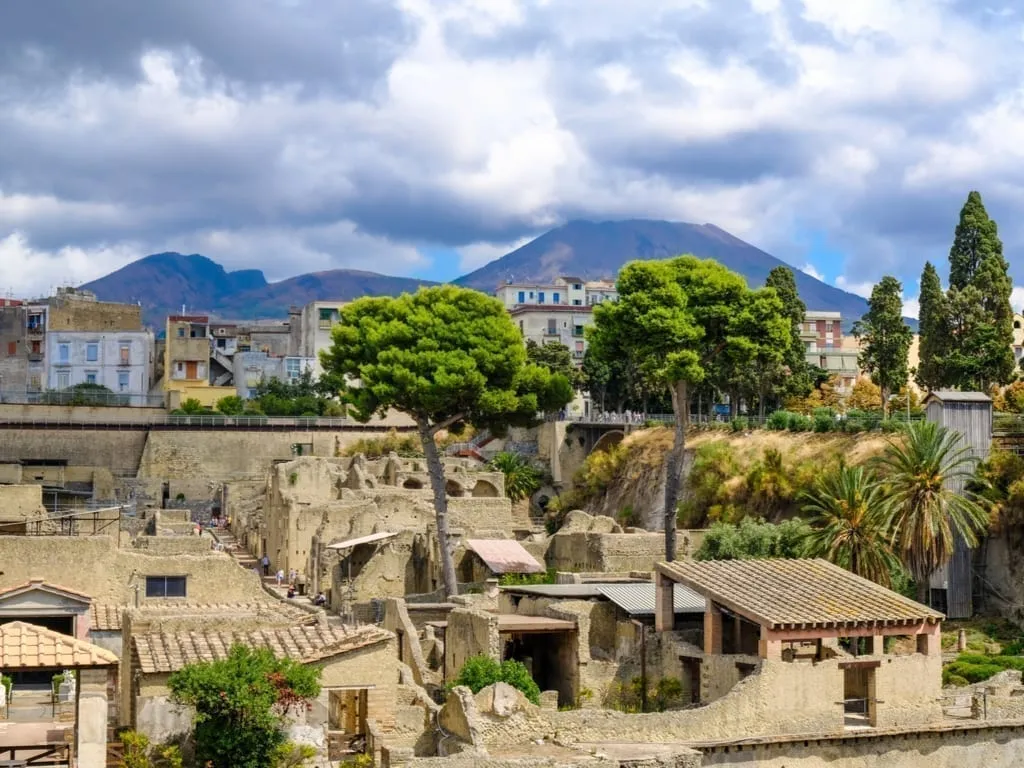
… and the wealthier of the two.
In 79 AD, Herculaneum was a wealthier city than Pompeii and was a resort town for Rome’s elite rather than a commercial port city.
As a result, the Herculaneum of today is a fantastic place to see incredible (and incredibly well-preserved) frescoes and opulent homes that give a peek into the living conditions of very wealthy Romans at the time.
Because of this, it’s also a wonderful place to simply appreciate some incredible art.
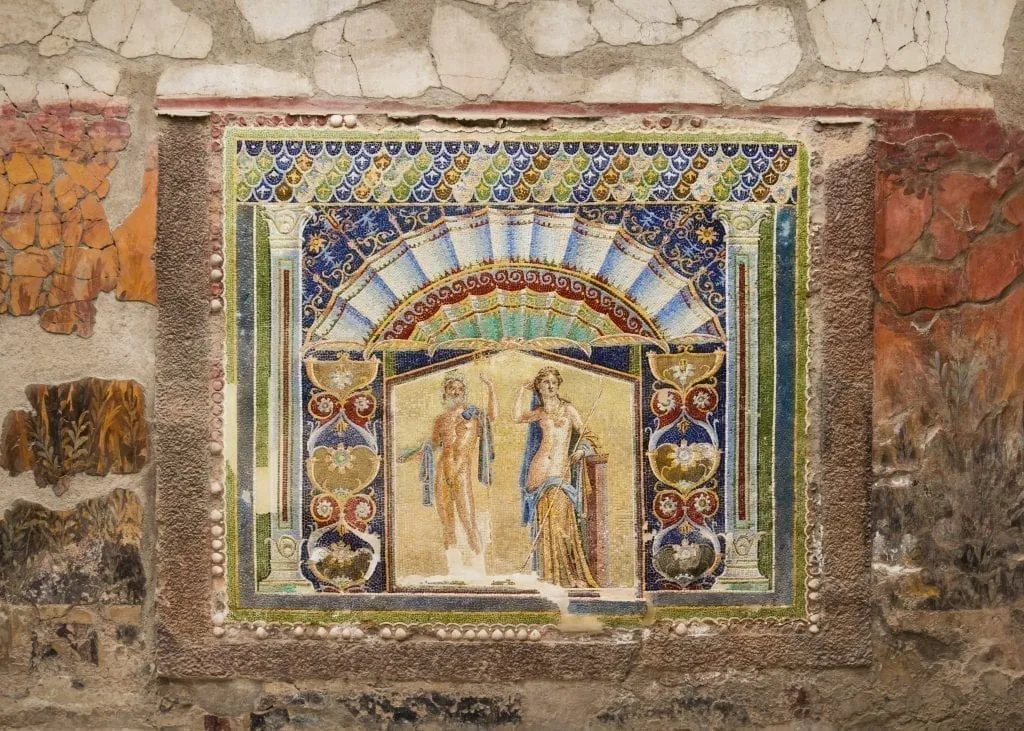
… you have limited time.
Herculaneum is a much smaller site than Pompeii, making it easier to see in a short amount of time without feeling like you’re missing anything.
Even 1-2 hours is long enough to be worth the visit, though 2-3 hours is ideal.
… you’re visiting on a very hot day.
Herculaneum is better for beating the heat for two reasons: first, since it’s smaller, you’ll generally spend less time exploring, and second, unlike Pompeii, it does get shade in some areas throughout the day.
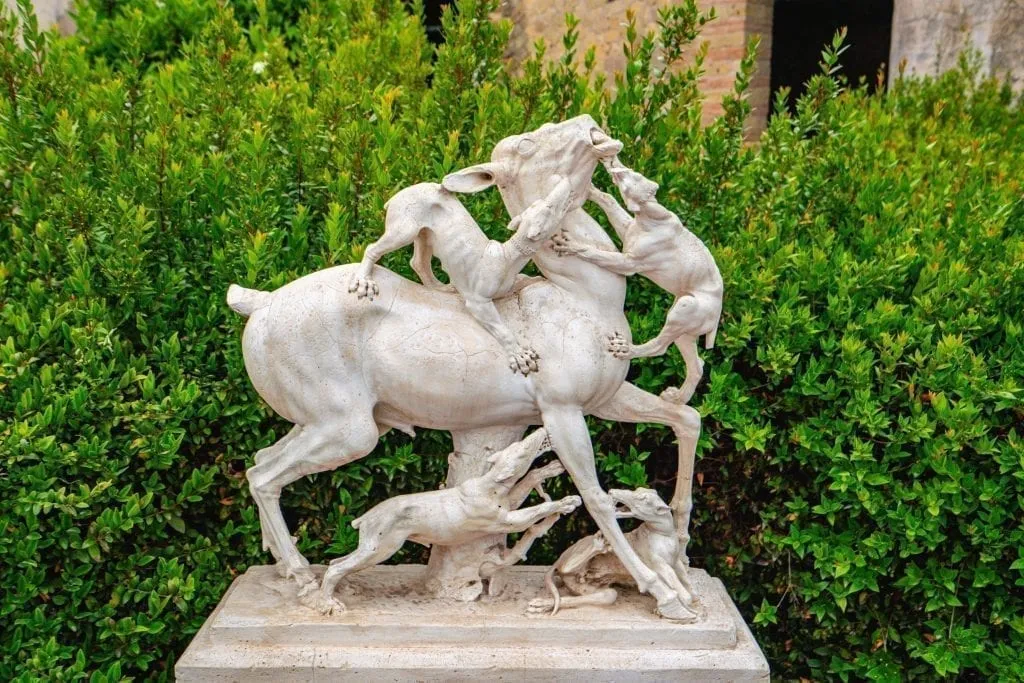
Is it worth visiting both Pompeii and Herculaneum?
For those with a strong interest in archaeology and/or Roman history, it’s definitely worth visiting both Herculaneum and Pompeii during the course of your trip to southern Italy.
For those who are very interested in the subject, you may also want to consider adding on a visit to Villa Oplontis at Torre Annunziata (which is also part of the UNESCO World Heritage site that recognizes Pompeii and Herculaneum) and a visit to the Naples’ National Archaeological Museum, which is the current home of many of the artifacts and artworks recovered from both cities.
We have visited both Pompeii and Herculaneum, though not during the same trip, and greatly enjoyed both.
For most visitors, it will make more sense to visit Pompeii and Herculaneum on separate days–unless you’re extremely limited on time and desperate to see both, I’d recommend breaking them up to avoid overloading on archaeology.
While you can definitely visit both Pompeii and Mount Vesuvius in one day (we have a full blog post about it here), if you’re hoping to visit Pompeii, Herculaneum, and Mount Vesuvius, then Herculaneum pairs better with Mount Vesuvius than Pompeii does, geographically speaking.
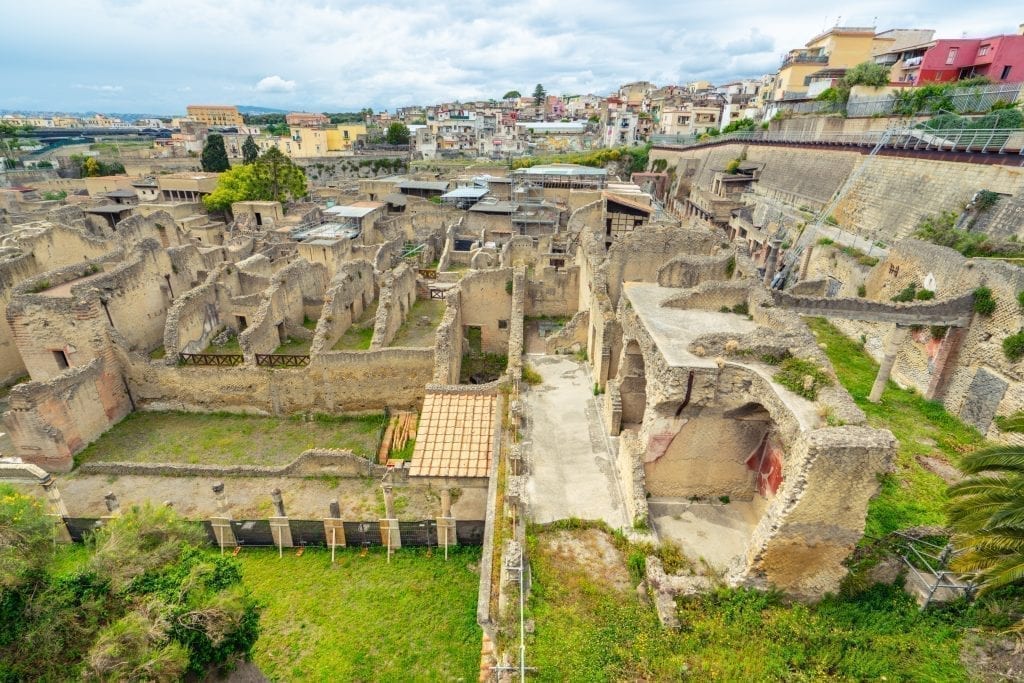
Can you visit Herculaneum and Pompeii in one day?
Yes, but it will be a long and, depending on the season, hot day–honestly, we really only recommend it if you’re a very enthusiastic archaeology and/or Roman history buff.
Otherwise, one site is probably enough to suffice for a single day, though we definitely recommend visiting Mount Vesuvius along with either city if you can squeeze it in!
If you have your heart set on seeing both Herculaneum and Pompeii in one day, then a guided tour that ensures you see the best of both places as efficiently as possible is incredibly helpful.
This popular tour leaving from Naples is a great option!
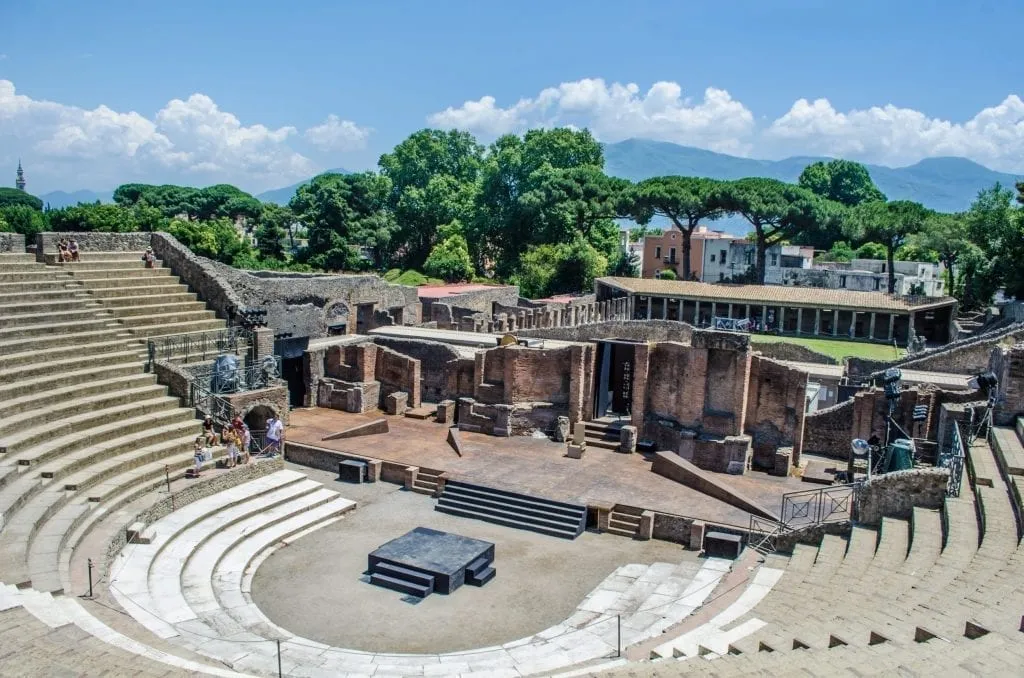
Ready to visit Pompeii or Herculaneum?
We highly recommend booking a tour to either site if you plan to take one.
If you’re visiting Pompeii, you’ll also want to book skip-the-line tickets in advance if you’re visiting independently, as the lines can get extremely long due to the popularity of the site.
You can book skip-the-line tickets for Pompeii here, or a fantastic guided tour here!
For Herculaneum, you can book a well-reviewed guided tour here!

Read More About Visiting Southern Italy
Settled the Pompeii vs Herculaneum debate with yourself and ready to keep planning your trip?
We’d love to help here on Our Escape Clause!
You can browse our 100+ Italy blog posts here, or check out these guides:
- Our Delicious, Independent Naples Pizza Tour
- Summer in Italy: How to Plan Your Sun-Soaked Dream Trip!
- 17 Magical Cities + Towns in Puglia to Visit
- How to Take a Captivating Day Trip to Capri
- The Ultimate Sicily Road Trip: An Epic 10 Days in Sicily Itinerary
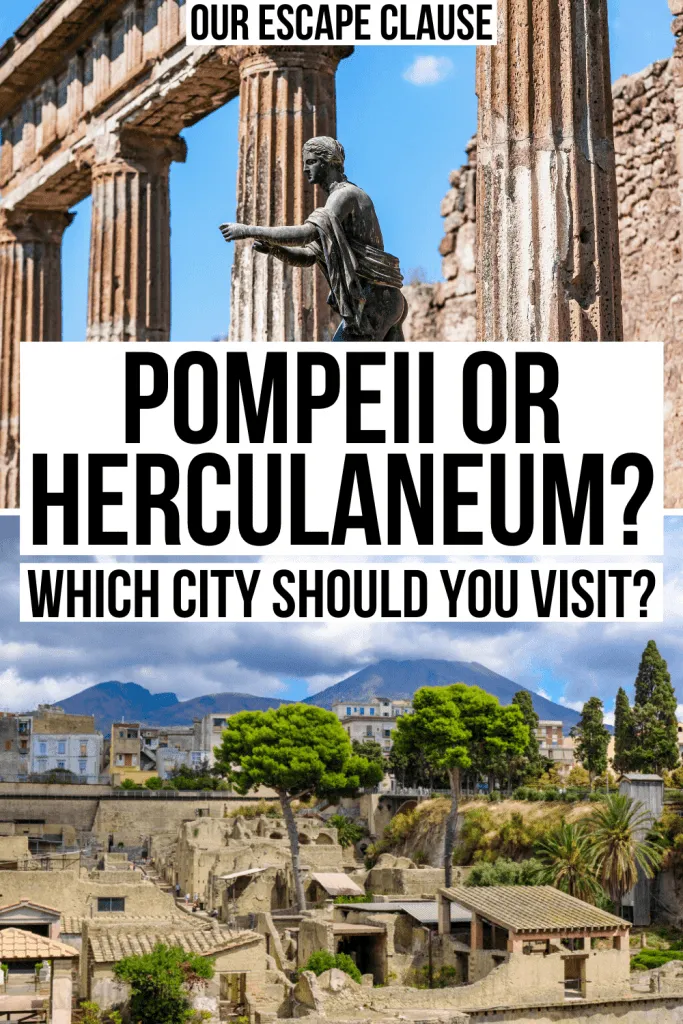
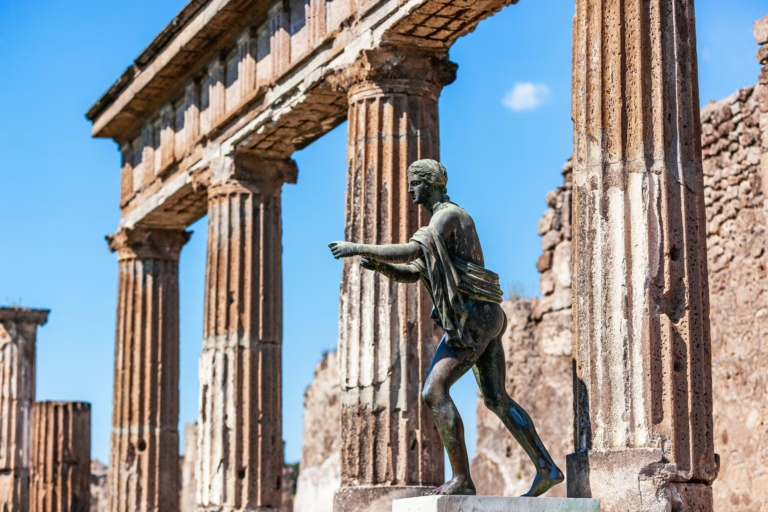
Hi Katie,
I want to do a day tour from Rome to see pompeii and maybe Amalfi coast. Is it doable or too long of a day ?I am not interested in taking the train there. Can you recommend any tours for this?
Hi Allison!
It is just barely doable, but a very long day! It’s convenient that you’d prefer a tour company, as it’s really the only way we’d recommend trying to squeeze it all in to one day.
Take Walks, one of our favorite tour companies, runs an extremely popular tour from Rome to Pompeii for the day with a drive along the Amalfi Coast and brief taste of the views. We go into more detail about it in this post: https://www.ourescapeclause.com/best-day-trips-from-rome-italy/